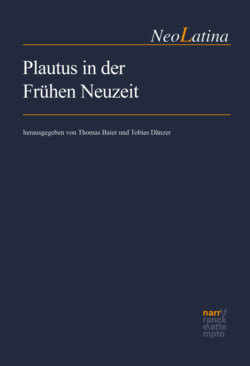Читать книгу Plautus in der Frühen Neuzeit - Группа авторов - Страница 23
3. The Camels Described and Distinguished; Their Fate
ОглавлениеIn the painting, the Vetus (B) is a Bactrian camel. It has two humps to symbolize the full 20 comedies of Plautus that it carries. Those comedies are depicted as slabs of salt that, by a nice coincidence, look like early modern folio editions. The other camel, C, the Decurtatus, is a dromedary. It has only one hump, to remind readers that it contains only the later 12 comedies (BacchidesBacchides + EpidicusEpidicus–TruculentusTruculentus).
We know CamerariusCamerarius d.Ä., Joachim had these two camels because upon his death in 1574, they were found among his belongings. His sons JoachimCamerarius d.J., Joachim Jr. and PhilipCamerarius, Philip received them as a bequest, and for a time they let other scholars use them.1 In 1598, the boys sold them both to the elector Frederick IVFriedrich IV. von der Pfalz for his Palatine Library in Heidelberg, Germany (it is not to be confused with the Palatine hill in Rome). Frederick (1574–1610) paid them 26.10 coronati, and it is probably not a coincidence that a few months later, he appointed Joachim Jr.’s son, LudwigCamerarius, Ludwig, as his advisor (consiliarius).2
The man who prompted Frederick to buy the manuscripts was Janus GruterGruter, Jan (1560–1627), head of the Palatine Library. GruterGruter, Jan saw their extraordinary value for Plautine scholarship, and in time he used them to produce his own important edition (Wittenberg, 1621). Meanwhile, other editors came to Heidelberg to consult the camels, among them Friedrich TaubmannTaubmann, Friedrich (1565–1613), J. P. PareusPareus, Johann Philipp (1576–1648), and possibly Claude Salmasius (1588–1653).
PareusPareus, Johann Philipp is to blame for giving the camels their misleading nicknames Vetus (old) and Decurtatus (shortened or mutilated).3 I say “misleading” because the Decurtatus is no more “shortened” or “mutilated” than a one-humped camel is; it was never complete to begin with:
Tubera habet duo Bactrius, at dromedarius unum;
dic tamen, umquamne hiC semicamelus erit?
Even worse, the Decurtatus is older than the Vetus. According to Karl Zangemeister (1837–1902), GruterGruter, Jan’s eventual successor as head of the Palatine Library, the Vetus dates to the 11th century but the Decurtatus dates a bit earlier, to 10th/11th century. A 17th-century cataloguer in the Vatican Library described the Vetus as antiquus but the Decurtatus as antiquissimus.4
As noted in the argumentum above, in 1622 the Vatican librarian Leo Allatius Allatius, Leo(1586–1669) transported both manuscripts and many others from the Palatine Library over the Alps, tearing off their bindings to reduce weight and allegedly on horse- or muleback for part of the way, and deposited them in the Vatican Library, where they were rebound.5 The Vetus is there still. In 1797 the Decurtatus was taken to Paris, and in 1816 the Pope donated it to Heidelberg University Library, where it now resides.6
Both camels are good witnesses to the true text.7 Given their value, it is an abiding mystery why – as I shall discuss in a moment – CamerariusCamerarius d.Ä., Joachim used the Vetus extensively in preparing his 1552 edition, but barely used the Decurtatus at all. Equally mysterious is how he obtained it. Since these mysteries stand in stark contrast to what we know of the Vetus, it is worth reviewing CamerariusCamerarius d.Ä., Joachim’ claims about both manuscripts here.
